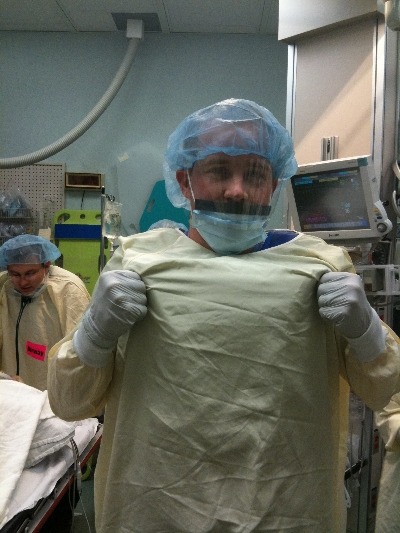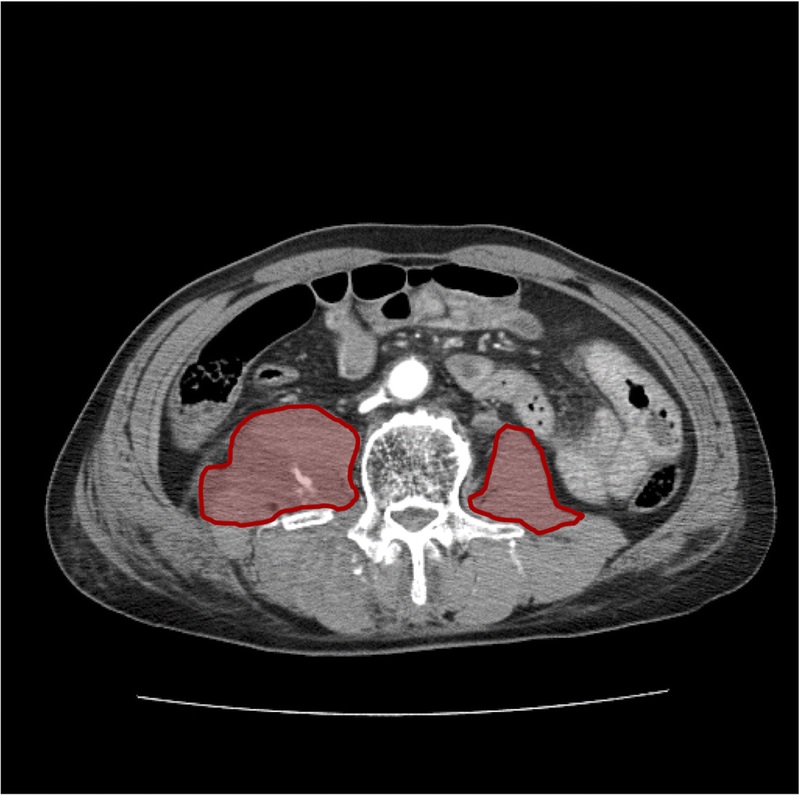Okay, so you’ve seen “other people” wearing perfectly good lead aprons lifting them up to their chin during portable x-rays in the trauma bay. Is that really necessary, or is it just an urban legend?
After hitting the medical radiation physics books (really light reading, I must say), I’ve finally got an answer. Let’s say that the xray is taken in the “usual fashion”:
- Tube is approximately 5 feet above the xray plate
- Typical chest settings of 85kVp, 2mAs, 3mm Al filtration
- Xray plate is 35x43cm
The calculated exposure to the patient is 52 microGrays. Most of the radiation goes through the patient onto the plate. A very small amount reflects off their bones and the table itself. This is the scatter we worry about.
So let’s assume that the closest person to the patient is 3 feet away. Remember that radiation intensity diminishes as the square of the distance. So if the distance doubles, the intensity decreases to one fourth. By calculating the intensity of the small amount of scatter at 3 feet from the patient, we come up with a whopping 0.2 microGrays. Since most people are even further away, the dose is much, much less for them.
Let’s put it perspective now. The background radiation we are exposed to every day (from cosmic rays, brick buildings, etc) amounts to about 2400 microGrays per year. So 0.2 microGrays from chest x-ray scatter is less than the radiation we are exposed to naturally every hour!
The bottom line: unless you need to work out you shoulders and pecs, you probably don’t bother to lift your lead apron every time the portable x-ray unit beeps. It’s a waste of time and effort! Just stand back and enjoy!



